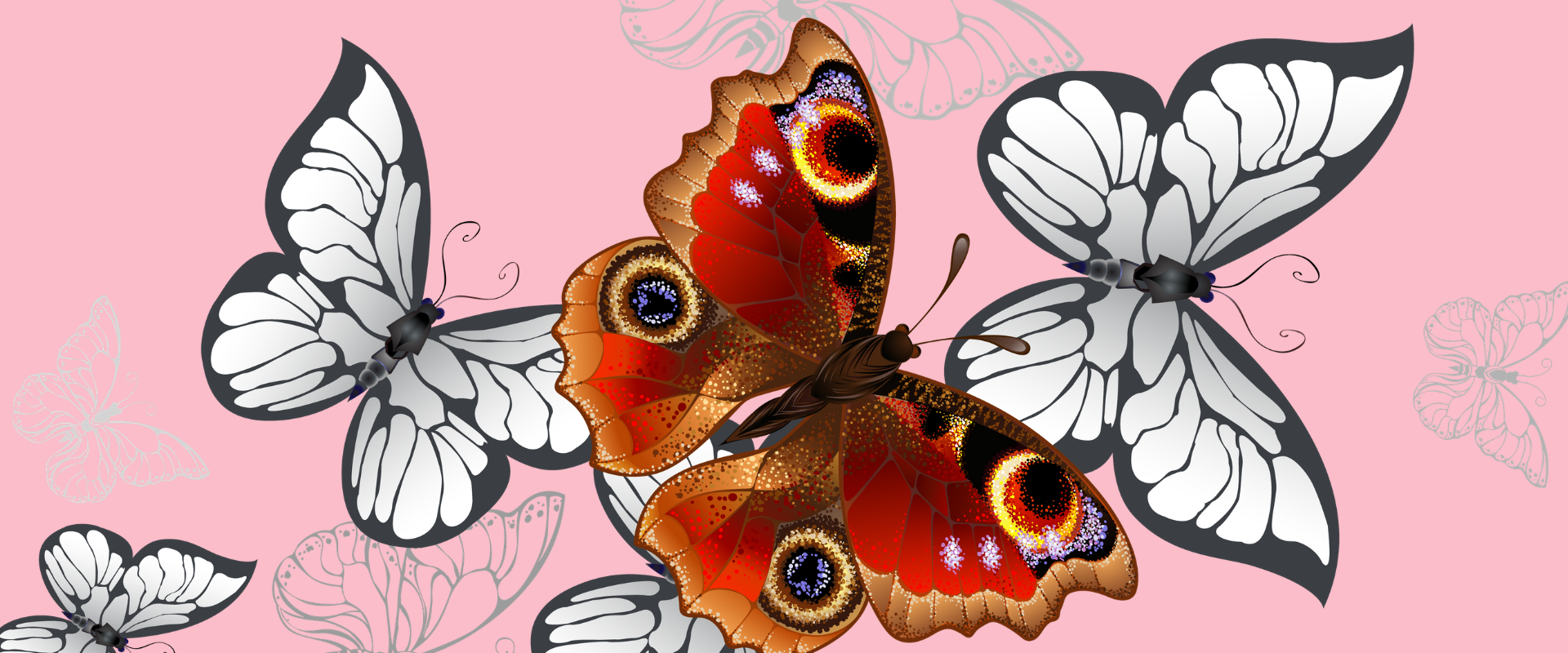Prey Survival by Predator Intimidation
June 4, 2021 | 5 min read

June 4, 2021 | 5 min read

Sometimes, the threat of danger is larger than the danger itself. In the world of predators and their prey, there is a constant trade-off between risk and reward. To the predator, every hunt is a balance between putting itself at risk and capturing its prey. The risk of detection from other predators, the risk of the prey being toxic, the risk of the prey actually pulling an Uno reverse card and turning out to be a predator in disguise; these are some of the risks a predator would have to take on in order to get itself a meal. Naturally, to improve survivability against these risks, evolution sometimes codes in an innate fear to certain markers in the wild that lets a predator know when to prey on something and when not to. Some prey species like butterflies have found a way to use this hard-coding against their predators.
In the paper we are about to explore, Adrian Vallin et al. explore how peacock butterflies (Aglais io) use eyespots as a defence mechanism against blue tits, one of their predators. Peacock butterflies have spectacularly coloured eyespots on the upper-side of their wings. When at risk of predation, in addition to displaying their striking eyespots, the butterflies also flap their wings in a manner that results in the production of a hissing noise. In the present paper, the researchers analyse the effect of eyespots and the sound the butterflies produce on the probability of predation.
The researchers reared larvae of wild-caught females on the host plant Urtica dioica. Once the larvae pupated and metamorphosed into butterflies, the butterflies were kept in a cold-storage room at 6 degrees Celsius. A total of 54 such butterflies were taken, distributed among three treatments, each with their own controls. 54 blue tits (Parus caeruleus) were taken as the predator of choice, caught from the wild. During the predation trials, which involved one bird and one butterfly at a time, the bird was released into a room with a log in it that the butterfly was situated on. Several parameters of the interaction between the bird and the butterfly were measured, chief among which was the ultimate fate of the butterfly. Now to describe the treatments a little.
In the first treatment, the researchers took 10 butterflies before the trials and blacked their eyespots out using a black marker pen. 9 butterflies were taken as a control for this treatment with eyespots left intact. This treatment tests the importance of eyespots in defence against predation while accompanied with sound (experimental has sound but no eyespots while the control has both). In the second treatment, the researchers took 8 butterflies and trimmed portions of their wings off in order to make it impossible for the butterflies to produce any sort of sound when they flap their wings in response to predator threat. Their eyespots were left intact. 8 butterflies with intact eyespots and sound production were taken as controls in this treatment. This treatment tested whether or not the sound component is critical to the efficacy of the eyespots (experimental batch had eyespots but no sound while the control had both). As part of the final treatment, 10 butterflies were taken with blacked-out eyespots and hampered sound-production. The control batch of 9 butterflies had their eyespots left intact and sound production intact. This treatment tests the efficacy of sound and eyespots in unison in deterring a predator (experimental batch had neither eyespots nor sound while control had both).
It was found that the eyespots were very effective against predation. The butterflies in treatments that had blacked-out eyespots had noticeably lower chances of survival, with 13 out of 20 butterflies having been successfully predated upon. There was no noticeable difference in survival when sound was removed from the picture. Out of the 34 butterflies that had eyespots left intact, only one butterfly was actually predated upon. All the remaining 33 managed to successfully scare the predator off, with or without the ability to produce a sound. When the behaviour of the blue tit itself was observed, it was seen that in the 30 minutes that each bird was allowed to attempt to predate on the butterfly after it detected the butterfly, the wing-flicking behaviour shown by the butterfly almost always caused the bird to cancel its approach; this indicates that the bird was indeed somewhat startled by the butterfly’s display. Before this paper, scientists had assumed that the eyespots were effective against predation but hadn’t yet demonstrated this fact conclusively. This paper is significant as the first one to successfully investigate and demonstrate this phenomenon.